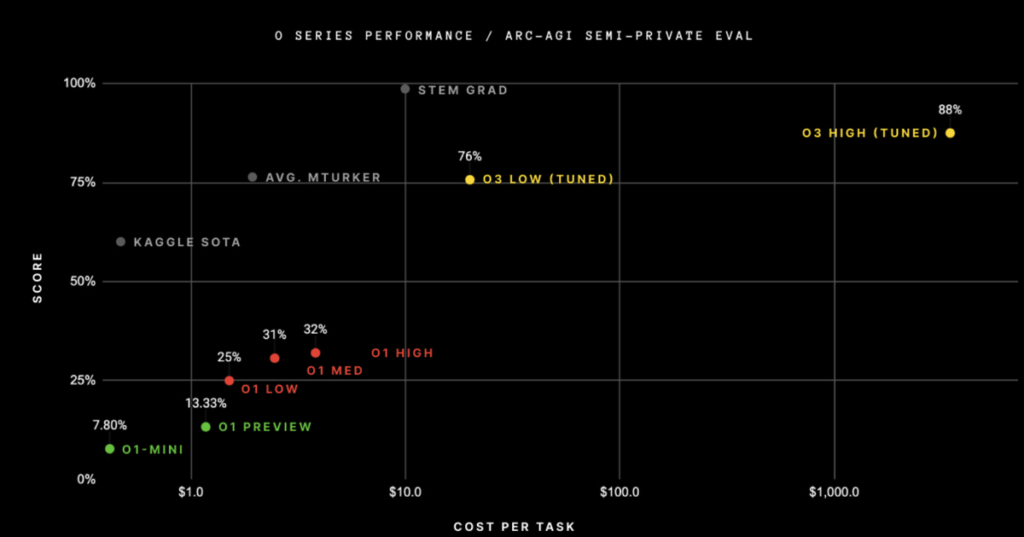OpenAI has once again raised the bar in the AI world with its latest language model, GPT-o3. With promises of unprecedented capabilities, this new technology is being hailed as a game-changer. However, there’s a significant catch: the price. As powerful as it is, GPT-o3’s cost could easily skyrocket to over $1,500 per query. So, what exactly is driving these steep costs, and what does it mean for the future of AI? Let’s dive into the details.
A Technological Leap That Could Cost an Arm and a Leg
GPT-o3 is being touted as a major advancement over its predecessors. With enhanced reasoning abilities and an improved ability to follow logical pathways, it promises to solve problems and answer questions at a level previously thought impossible for AI. This leap in technology, however, comes with a hefty price tag. According to Arc Prize, an organization that specializes in software development to assess AI capabilities, GPT-o3’s advanced mode can cost OpenAI a jaw-dropping $1,500 per query. For comparison, its predecessor, the GPT-o1-mini, costs only about $0.20 per query. This stark difference in cost highlights the vast difference in computational power required to run GPT-o3.
The Future of ChatGPT: Will GPT-o3 Mini Save the Day?
While the high price of GPT-o3’s advanced version may seem prohibitive, OpenAI is offering a mini version of the model that comes at a lower cost. However, even the mini version’s price tag is still a substantial $20 per query. This makes it clear that GPT-o3 is not likely to become a mainstream tool for casual users. It’s hard to imagine everyday consumers regularly paying such amounts to interact with an AI, no matter how advanced it may be.
This is where OpenAI’s strategy becomes interesting. CEO Sam Altman has emphasized that GPT-o3 will be available in three different versions, including the more affordable o3-mini. The intention seems to be to offer a balance between performance and cost, ensuring that there are options for both high-end scientific users and more general-purpose consumers. However, at current prices, it seems that the advanced versions of GPT-o3 are better suited for specialized applications rather than widespread public use.
A Niche for Scientific Use?

One area where GPT-o3’s high-powered models could find a home is in the scientific community. Complex calculations, advanced research, and sophisticated problem-solving tasks often require massive computational resources, and GPT-o3 could be the perfect tool to handle these demands. Its ability to think through complicated scenarios and analyze data with an unprecedented level of precision could make it invaluable for researchers tackling difficult problems across fields like physics, biology, and data science. This specialized utility might justify the steep costs in these areas, where the financial investment can often be balanced out by the potential breakthroughs and innovations GPT-o3 could help enable.
What Does This Mean for the Future of AI?
The high cost of GPT-o3 raises some important questions about the accessibility and sustainability of next-gen AI technologies. While we can expect that cutting-edge models like GPT-o3 will continue to evolve, the reality is that only large organizations, academic institutions, and other specialized users may be able to afford these tools in the near future. The broad consumer market, at least in the short term, is likely to find the costs prohibitive.
That said, it’s important to remember that this is not the end of the story. As with many technological breakthroughs, prices often drop over time as the technology becomes more efficient, and new applications emerge. Just as we’ve seen in previous iterations of AI, more affordable versions of GPT-o3 could eventually become available, opening the door for greater access and widespread adoption. For now, though, the focus will likely be on niche applications where its abilities can be truly leveraged to their full potential.
Conclusion
GPT-o3 represents an extraordinary leap forward in AI technology, with capabilities that could revolutionize industries from research to business. But that revolution comes with a hefty price tag. Whether the high costs will limit its use to only a few specialized sectors remains to be seen. As OpenAI continues to develop this model, it will likely find ways to make it more accessible over time. For now, GPT-o3 remains a remarkable, albeit expensive, tool with the potential to reshape the future of AI—if the cost can be justified.






